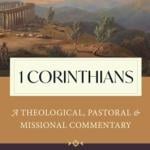Barth issues a sharp caution for those who frequently condemn the Reformed emphasis on the “primacy of the intellect” ( CD 1.1): “What man does when he uses this faculty, when he thinks and tries to understand, can in fact be indolence, hubris or both like any other human self-determination. But is not the same true of feeling, conscience, will, or anything else one might mention here? Are they not all self-determination, and no less so? Can they be less... Read more
















